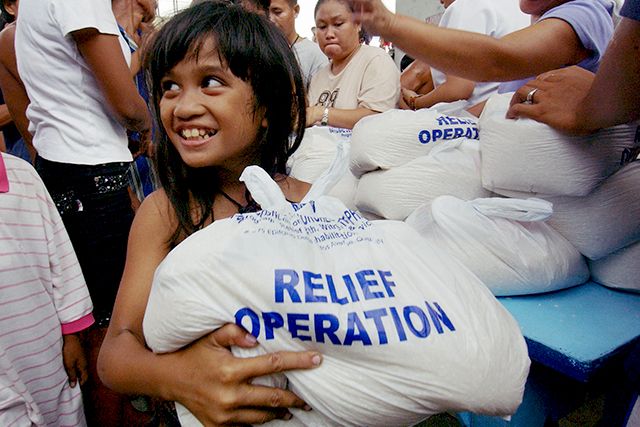April 30, 2019

The public blames humanitarian organizations, who are inappropriately called inefficient, corrupt, and wasteful.
Is it really their fault?
In most cases, no. PhD student Raquel Buzogany has been exploring this problem and factors that contribute to what is called “material convergence” since she researched it for her master’s thesis. Under the guidance of supervisors, Prof. Paulo Gonçalves (Università della Svizzera italiana) and Hugo Tsugunobu Yoshizaki (University of São Paulo), she presented her findings at the POMS conference in Washington DC on 4 May 2019.
Material convergence occurs when a huge variety of items, ranging from essential to useless arrive on the scene of a disaster from everywhere. It creates many problems, most of which cannot be controlled by single humanitarian organizations.
Why does it happen?
Everyone wants to help. People are emotionally moved by media coverage showing traumatized adults and crying children. They send food, clothes, shoes, and anything else they can, as fast as possible. But some of the food is not appropriate or is past the expiration date; many clothes are dirty, or so worn out that they cannot be distributed; mismatched shoes cannot be paired in the chaos. Despite the good intentions, the volume of donated items creates more problems.
Why is it a problem?
Instead of getting essentials to victims, such as appropriate food, hygiene kits, and medicine, relief workers are bogged down sorting through the massive influx of in-kind donations. Unfortunately, much of the donated items are junk. Useless as it is, relief workers still have to process it, even if only to throw it away, and free up storage space for critical items.
The first reports of material convergence are from the 1950s. It has been a problem in Haiti, the USA, the Philippines, Japan, Iraq, Brazil, and many other places. Actually, it takes place anywhere a disaster strikes.
Material convergence is a complex problem. The incoming materials typically include both high and non-priority materials. Deciding how to assign human resources can be difficult. If you assign everyone to distribute high priority aid, non-priority materials will probably get in the way and clog the process. Assigning everyone to process non-priority materials also does not work, since distribution of priority items is then stopped. How should you deploy your resources? It depends.
What can be done about it?
Previous research has identified certain policy solutions. However, they focus only on part of the problem. Raquel modeled the complete system and studied the impact of ten different policies using system dynamics. This showed how all other parts reacted to the implementation of policies and allowed her to compare the outcome in terms of, for example, time to assist all victims and number of victims assisted per day.
The research shows that policies that modified the allocation of human resources got better results. This occurs directly – as in a better allocation of human resources, and by increasing the quantity of human resources – or indirectly – as in implementing controls to prevent receipt of non-priority material, and by increasing donor education about what items to donate.
What works best?
Initially, Raquel expected policies that made more high priority materials available to work well. However, this was not the case. Some policies such as increasing the coordination between organizations to prevent duplicates, and increased material acquisition did not affect the distribution of material substantially. The study reviewed several other policies (e.g., changing the structure of distribution points, allocating resources to withhold non-priority material, decrease storage space), but none of them resulted in satisfactory outcomes; counterintuitively some of them worsened the overall humanitarian response.
When contemplating policy implementation, it is critical to consider other important factors – such as costs, time to implement, and the number of actors involved. Yet, it is important to understand how the system reacts to different feedback loops and what the expected results are in terms of assistance to victims of a disaster.
The insight of human resource allocation helps us not only alleviate the blame inaccurately placed on humanitarian organizations, but to understand the important positive impact they have on humanitarian response.


